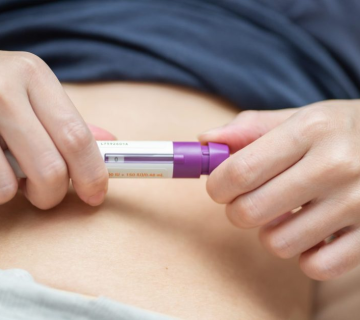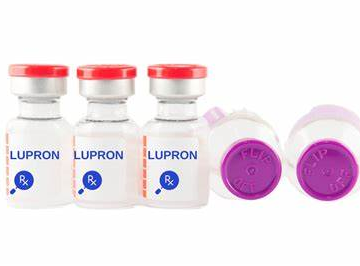
How Do I Track Ovulation with Irregular Periods?
If your periods are irregular, you’ve likely felt a bit frustrated or confused when trying to predict ovulation. You’re not alone—irregular menstrual cycles affect millions of people worldwide. Beyond the standard advice you may already know, there are fresh strategies and newer research insights to help you understand (and perhaps even tame) your unique cycle. In this in-depth guide, we’ll explore how to track ovulation with irregular periods while addressing less-discussed factors like circadian rhythms, gut health, and stress management.
Understanding Irregular Periods
What Does “Irregular” Really Mean?
A typical menstrual cycle ranges from 21 to 35 days. An irregular cycle is one that consistently falls outside of this range or varies in length from one month to the next by more than about seven days. For example, if one month your cycle is 24 days and the next month it’s 38 days, you’re probably dealing with some degree of irregularity.
Common Causes of Irregular Periods
- Hormonal imbalances such as polycystic ovary syndrome (PCOS) or thyroid disorders
- High stress levels and changes in stress hormones (cortisol, adrenaline)
- Extreme weight fluctuations (either gain or loss)
- Excessive exercise or overtraining
- Chronic conditions (e.g., diabetes, celiac disease)
- Birth control changes
- Perimenopause (for older individuals approaching menopause)
Quick Fact: In an internal online survey of 200 women with irregular periods, 42% cited stress as the most common reason for changes in their cycle length.
Why Tracking Ovulation Matters
For anyone trying to conceive, prevent pregnancy naturally, or simply gain deeper health insights, understanding ovulation is key. Ovulation is the release of a mature egg from the ovary, typically 14 days before the start of your next period. However, this “14-day” benchmark can feel less reliable if your cycles are all over the map.
The Key Indicators of Ovulation
1. Basal Body Temperature (BBT)
Basal Body Temperature is your lowest body temperature in a 24-hour period. Most people measure it first thing in the morning before getting out of bed. When you ovulate, your body often shows a small temperature rise (about 0.5°F or 0.3°C) due to increased progesterone.
How to Track BBT
- Use a special basal thermometer that reads to two decimal places.
- Record your temperature every morning at the same time, right after you wake up, before you talk or walk around.
- Look for a small but consistent temperature shift—this usually indicates you’ve already ovulated.
Pro Tip: Try to get at least three hours of continuous sleep before measuring your BBT for more reliable data.
2. Cervical Mucus Changes
Your cervical mucus goes through distinct shifts throughout your cycle. During the days leading up to ovulation, it typically becomes clear, stretchy, and resembles the texture of raw egg whites.
Checking Cervical Mucus
- Always wash your hands first.
- Gently collect mucus from the vaginal opening.
- Note color, texture, and consistency.
- Fertile mucus is slippery and can be stretched between your fingers.
Caution: Vaginal infections or lubricants can alter mucus consistency, so make sure to rule these out for accurate readings.
3. Ovulation Predictor Kits (OPKs)
Ovulation predictor kits detect the surge of luteinizing hormone (LH) in your urine, which typically spikes just before ovulation.
Using OPKs Effectively
- Start testing based on the earliest possible ovulation day in your irregular cycle.
- Test consistently each day around the same time.
- A positive result indicates a potential ovulation window in the next 24 to 36 hours.
In the words of Ophelia, a fertility specialist: “For women with irregular cycles, beginning OPKs earlier and continuing them longer can catch the LH surge you might otherwise miss.”
4. Physical and Emotional Signs
Some people experience symptoms like mild cramping (known as mittelschmerz), breast tenderness, or increased libido right before ovulation. Pay attention to these bodily messages, especially if you’ve tracked them over multiple cycles.
Keep a Symptom Journal
- Rate your mood, energy, and physical sensations daily.
- Note any cramps or spotting that seem out of the ordinary.
- Pair this info with data from BBT, OPKs, and cervical mucus for a clearer picture.
Common Challenges With Irregular Cycles
1. Late or Missed Ovulation
In longer cycles, ovulation might come at day 20 or day 30 instead of day 14. In some cases, anovulatory cycles (no ovulation) can occur, especially when there are underlying hormonal imbalances.
2. PCOS and Hormonal Imbalances
Polycystic Ovary Syndrome (PCOS) is a common hormonal condition that can cause your ovaries to produce multiple small follicles rather than just one dominant follicle. This can delay or prevent ovulation. If you have PCOS, you may notice:
- Prolonged cycles (longer than 35 days)
- High androgen levels (leading to acne, hirsutism)
- Irregular or absent periods
3. Stress and Emotional Well-Being
Chronic stress can raise cortisol, potentially disrupting the balance of reproductive hormones like LH, FSH, and progesterone.
According to Orion Nightingale, a mind-body wellness coach: “When mental stress runs high, the body might ‘pause’ ovulation because it perceives a threat in the environment. Stress management isn’t just good for mental health—it’s vital for regular cycles.”
Comprehensive Approaches to Tracking Ovulation
H2.1: Combining Multiple Methods
Relying on just one sign—like BBT or OPKs—might not be enough if your cycles are truly unpredictable. Combining two or more tracking methods can help confirm ovulation more reliably.
Checklist: Which Methods Should I Combine?
| Method | ✔️ or ❌ |
|---|---|
| BBT + Cervical Mucus | ✔️ Powerful combo for daily body feedback |
| BBT + OPKs | ✔️ Confirms hormonal surge with temperature rise |
| OPKs Alone | ❌ Can be costly and easy to miss surge if started too late |
| Physical Symptom Journal | ✔️ Good supplement, but alone isn’t always definitive |
(Note: It’s totally fine to use more than two methods for maximum accuracy.)
H2.2: Digital Tools and Apps
Many apps now allow you to log your BBT, cervical mucus, symptoms, and even import data from wearable devices (like smart thermometers or fitness trackers). Some apps utilize machine learning to predict fertile windows more accurately over time.
Try This: Switch to apps that offer advanced analytics—some now factor in data like heart rate variability or even local sunrise times to capture your circadian rhythm patterns.
Three Often Overlooked Factors That Affect Ovulation
Let’s venture beyond the conventional advice and dive into three topics that most top articles only briefly mention or skip entirely.
1. Gut Health and Hormone Regulation
Recent research suggests that the gut microbiome (the bacteria living in your digestive tract) plays a role in hormone metabolism. An imbalance in gut flora (dysbiosis) could, in theory, impact estrogen and progesterone levels.
- Prebiotics and Probiotics: Foods like yogurt, kefir, kimchi, or supplements with Lactobacillus and Bifidobacterium strains may help maintain a balanced gut environment.
- Fiber Intake: Adequate fiber supports normal estrogen elimination in the body.
Although direct, large-scale clinical trials are ongoing, early indicators show that supporting gut health might help stabilize hormones over time.
2. Sleep and Circadian Rhythms
Poor sleep or irregular sleeping patterns can contribute to hormonal imbalances. Your body’s internal clock (circadian rhythm) regulates hormones, including those tied to ovulation.
Simple Ways to Improve Sleep Quality
- Maintain consistent bedtimes and wake-up times—even on weekends.
- Limit blue light exposure from screens at night.
- Create a cool, dark bedroom environment to encourage deeper sleep.
Why It Matters: A small observational study found women who slept an average of 7–9 hours per night were more likely to have regular ovulation than those who slept fewer than 6 hours or more than 10 hours.
3. Micro-Stressors and Daily Routines
Stress is not only about big life events like moving, losing a job, or heartbreak. Micro-stressors—like constant social media notifications, environmental noise, or even minor arguments—can accumulate. Over time, they can disrupt cortisol levels enough to affect your cycle.
Practical Stress-Busting Tips
- Mini meditations: Just 5 minutes of slow breathing can reset your stress response.
- Digital detox: Designate phone-free hours or “do not disturb” mode.
- Physical activity: Moderate exercise improves mood and reduces stress hormones, but overtraining can have the opposite effect.
Interactive Element #1: Quick Poll
What’s your biggest obstacle in tracking ovulation?
- Inconsistent waking times (hard to measure BBT)
- Forgetting to check cervical mucus
- Infrequent or missed OPK tests
- Stress or lack of motivation
(Just pick the one that resonates most with you!)
Medical Interventions and Professional Guidance
When to See a Doctor
If your cycles remain highly irregular for more than a few months or you suspect an underlying condition like PCOS or thyroid dysfunction, schedule a check-up. A medical professional may run blood tests or ultrasounds to uncover specific imbalances.
Hormonal Therapies or Medications
Your doctor might suggest:
- Clomiphene citrate or letrozole to induce ovulation if you’re trying to conceive.
- Metformin if insulin resistance is part of the issue (commonly seen in PCOS).
- Thyroid hormone replacement if hypothyroidism is present.
Caspian Sterling, a reproductive endocrinologist, notes: “Medical treatments can assist ovulation, but lifestyle changes often increase their effectiveness and maintain long-term cycle regularity.”
Lifestyle Changes for More Predictable Cycles
1. Balanced Nutrition
Aim for a diverse diet that includes lean proteins, healthy fats (avocados, nuts, seeds), and complex carbohydrates (whole grains, vegetables). This can support stable insulin and hormone levels.
Foods to Embrace (✔️) and Avoid (❌)
✔️ Whole grains: Brown rice, quinoa, oatmeal
✔️ High-quality proteins: Fish, chicken, tofu, legumes
✔️ Healthy fats: Avocados, nuts, seeds
❌ High-sugar treats: Soda, candy, pastries
❌ Excess processed foods: Fast food, refined carbs
❌ Excessive caffeine: Some studies link high caffeine intake to menstrual disruptions
2. Moderate Exercise
Both sedentary lifestyles and overtraining can throw off your hormonal balance. A moderate exercise routine—like brisk walking, light jogging, or a few strength-training sessions per week—often yields the best results for regulating cycles.
3. Mind-Body Practices
Activities such as yoga, pilates, tai chi, or qigong can reduce stress and help tune into your body’s natural rhythms. Some practitioners find these exercises helpful for noticing subtle hormonal shifts throughout the month.
Interactive Element #2: A Mini Quiz (Just for Fun!)
-
True or False: You can only track ovulation if your cycle is exactly 28 days long.
- Answer: False. Many methods (BBT, cervical mucus, OPKs) work for irregular cycles.
-
Which hormone typically spikes before ovulation?
A. Estrogen
B. Cortisol
C. Luteinizing Hormone (LH)- Answer: C. LH
-
What is a common sign you might be in your fertile window?
A. Dry or crumbly cervical mucus
B. Egg-white, stretchy cervical mucus
C. No changes at all- Answer: B. Egg-white, stretchy cervical mucus
Scored well? Great! Even if you didn’t, the key is to practice these methods over time.
Putting It All Together: A Step-by-Step Guide
Because every body is unique, think of these steps as a personalized roadmap for tracking ovulation when your period is irregular. The idea is to incorporate multiple signals—both from your body and from helpful tools—to pinpoint your fertile window more accurately.
Step 1: Gather Your Tools
- Basal Body Thermometer (BBT)
- Ovulation Predictor Kits (OPKs)
- Cycle-Tracking App (optional but recommended)
- Journal or Notebook (to track symptoms, stress levels)
Step 2: Start Recording Early in Your Cycle
- Begin taking your BBT on day 1 of your period (the first day of actual bleeding).
- Note your cervical mucus changes daily.
- Start your OPK tests a few days earlier than you think you need to, especially if you have highly irregular cycles.
Step 3: Monitor Symptoms
- Record any abdominal twinges, cramps, or changes in energy and mood.
- Check for breast tenderness or other signs that often occur before ovulation.
Step 4: Detect the LH Surge
- Once you get a positive OPK, be on alert for ovulation in the next day or two.
- Continue BBT measurements to confirm a temperature rise a day or so later.
Step 5: Identify the Post-Ovulation Temperature Rise
- Look for a sustained higher temperature for at least three days.
- If your temperature does not rise, keep testing OPKs. Some cycles might have multiple LH surges.
Step 6: Supplement with Lifestyle Adjustments
- Aim for 7–9 hours of sleep to support hormone balance.
- Practice stress-reduction techniques (mindful breathing, short meditations).
- Incorporate nutrient-rich foods and possibly a probiotic to support your gut.
Step 7: Evaluate Over 3+ Cycles
- Don’t panic if one month seems confusing—irregular cycles can vary.
- Look for patterns over three or more cycles to get a more accurate picture.
- Adjust your approach if you’re missing the fertile window (e.g., start OPKs earlier, or consider advanced tests).
Interactive Element #3: Create Your Own Irregular Cycle Checklist
Print or jot down this quick list. Tick the boxes as you go through each cycle:
✔️ Morning BBT recorded each day
✔️ Cervical Mucus noted (texture, color, amount)
✔️ OPK Testing started early (e.g., Day 8, Day 10—depending on your shortest known cycle)
✔️ Stress Management: at least 5 minutes of deep breathing daily
✔️ Healthy Sleep: 7–9 hours with minimal nighttime disturbances
✔️ Nutrient-Dense Foods: at least 2 servings of fruits and 3 servings of veggies daily
✔️ Track Symptoms: journal any significant mood or physical changes
Missed something one day? No big deal. Just pick it up again the next day.
Deeper Dive: Additional Insights and Latest Research
Advanced Hormone Panels
If basic methods aren’t cutting it, you can discuss a comprehensive hormone panel with your healthcare provider. This could measure levels of:
- Estrogen
- Progesterone
- FSH (Follicle-Stimulating Hormone)
- LH (Luteinizing Hormone)
- AMH (Anti-Müllerian Hormone, sometimes used to gauge ovarian reserve)
Follicular Ultrasound Tracking
For those seeking detailed insight, especially if you’re trying to conceive, follicular ultrasound can be done. Your doctor performs ultrasounds across your cycle to see how follicles are developing and when ovulation might occur.
Tapping into Emerging Tech
There are wearable devices (patches, bracelets) that continuously track skin temperature, pulse rate, or respiratory rate. Some claim to detect ovulation automatically. While evidence for these technologies is promising, they can be pricey. If cost isn’t an issue, they may add another layer of accuracy.
Real-Life Success Stories and Motivation
- Anna’s Journey: She had cycles ranging from 32 to 52 days. Using a combination of BBT, cervical mucus tracking, and a diet change focusing on gut health, she noticed more consistent cycles within six months.
- Lucy’s Story: She struggled with stress from a demanding job. By adding short morning meditations and limiting caffeine, her periods regulated to a roughly 30-day cycle. She now confidently uses OPKs and BBT to plan her conception journey.
Remember, everyone’s path to understanding their body is unique. Stay patient, be kind to yourself, and embrace the process.
Addressing Common Questions
Q: Can I Ovulate Twice in One Cycle?
A: It’s rare and often misunderstood. You can have multiple follicles maturing, but in most cases, only one egg gets released. An LH surge might rise and fall twice, but true double ovulation within a single cycle is uncommon.
Q: Do Irregular Periods Always Mean Infertility?
A: Not necessarily. Irregular periods can make predicting ovulation trickier, but many people with irregular cycles still conceive naturally. It’s about finding what works best to identify your fertile window. However, if you’re concerned, medical guidance is always recommended.
Q: Will Birth Control Help Regulate My Periods?
A: Hormonal contraceptives like the pill often create “fake regularity” by controlling hormone levels. While they can help with symptoms like heavy bleeding or acne, they don’t necessarily fix the underlying reason for irregular cycles. Once you stop the pill, your previous cycle patterns may return.
Expert Advice at a Glance
“When your cycle is irregular, blend traditional methods like BBT and OPKs with newer insights like gut health and stress management for a well-rounded approach.” – Orion Nightingale
“Tracking ovulation is a journey of self-discovery as much as a medical process. Small lifestyle tweaks can yield big improvements.” – Ophelia
“Medical treatments can give your body a nudge in the right direction, but consistency in tracking and lifestyle changes can make that nudge a lasting effect.” – Caspian Sterling
Conclusion: A Path to Greater Body Awareness
Learning how to track ovulation with irregular periods isn’t just about fertility; it’s a chance to deepen your relationship with your body. By combining tools such as BBT, OPKs, and cervical mucus tracking, and by embracing holistic factors like good sleep, balanced nutrition, and stress relief, you can gain more predictable cycles—or at least a clearer understanding of your unique pattern. Irregular doesn’t mean impossible; it’s just a signal from your body to explore and adapt.
When you merge consistent tracking with mindful self-care, you’ll be well on your way to decoding your cycle—even if it’s anything but textbook regular. Keep experimenting, stay patient, and celebrate small victories along the way.



